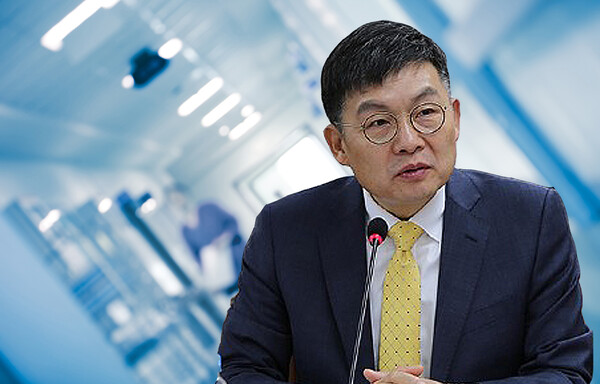
Professor Kim Yoon, a medical management expert at Seoul National University College of Medicine, once again emphasized the need to expand the number of medical school students. To solve various problems in the medical field, Kim argued that the number of doctors should be increased.
Professor Kim is also a standing representative of Solidarity for Better Healthcare. This healthcare policy council calls for increasing the medical school enrollment quota to solve the problem of essential healthcare.
“For decades, the government has focused on what doctors and hospitals want, which has led to a very dysfunctional healthcare system,” Kim said, appearing on a YTN Radio talk show on Monday. “The shortage of doctors has triggered a series of festering problems one after another.”
Professor Kim said, “In Korea, hospitals and doctors can build medical clinics wherever they want, but the number of doctors who need to treat inpatients is not increasing due to the opposition of the Korean Medical Association,” stressing the need to increase the number of medical school students.
He also attributed the overcrowding of emergency rooms to a lack of doctors, not the admission of mild patients. While the proportion of mild cases in total emergency cases is similar to that of other countries, there are not enough doctors to diagnose and treat emergency cases in Korea, he pointed out.
“The government and doctors say that hospitals are forced to refuse to treat severe emergencies because of the high number of mild cases, but this is not true,” he said. “The number of emergency cases in Korea is only one-third of the U.S. and the U.K. Nor is the share of mild cases among all patients higher in Korea than in other countries.”
Nevertheless, Korean emergency rooms are crowded because there are not enough doctors to diagnose and treat emergency patients, he said. The emergency room is where emergency patients receive first aid and are diagnosed and triaged. However, even after the triage, there are no empty patient rooms, operating rooms, and intensive care units. Hence, Kim added that patients remain in the emergency room for a long time.
“Increasing medical school enrollment quota is a starting point or a requirement for solving the current physician shortage, the collapse of our essential healthcare system, and the collapse of provincial healthcare,” he said. “It’s not a silver bullet, but you can’t solve this problem without increasing the number of physicians.”
He also called for rebuilding the pediatric healthcare system to ensure that young critical and emergency patients do not fall through the cracks and for “selective and focused reimbursement” to reward hospitals that treat pediatric patients 24/7.
“The number of pediatric clinics has not decreased, but the treatment volume has declined by about 20 percent in the past seven to eight years. The problem with neighborhood pediatric clinics is temporary or limited to a few clinics and will be resolved over time,” he said. “The problem areas are inpatients, critical and emergency care.”
Kim noted that a situation had been created where physicians could earn more money by choosing a different specialty than pediatrics. This led to a decline in medical residents’ applications for pediatrics, a shortage of on-call physicians, and a crisis in emergency, critical care, and inpatient care. He added that the low opportunity cost and relative deprivation among pediatricians created a void.
“Fundamentally, we need to reform the pediatric and healthcare delivery systems,” he said. “The government must pick and focus on rewarding hospitals that treat pediatric patients 24/7.”
He suggested introducing “community physicians” to address the provincial healthcare void.
“The concentration of doctors in the Seoul metro region is getting worse and worse. Nearly half of the students in provincial medical schools are from the greater Seoul area and are likely to return to the capital after graduation,” he said. “No matter how good a doctor you are, if there are no other doctors where you live, there will be a medical gap.”
Kim suggested that the nation can close the regional medical gap in 10 to 20 years by recruiting 80 percent of the doctors from their respective regions and having them work in the region for a certain period after graduating from regional medical schools and becoming specialists.
“Otherwise, the provincial healthcare system could collapse, wiping out provinces themselves,” he said.
Related articles
- Bumpy road ahead for planned increase of medical student quota
- Government set to increase medical school enrollment quota from 3,058
- ‘Ministry opens up all possibilities in discussing medical school quota increase’
- Government and ruling party press medical community to increase physicians
- Top official reemphasizes need for increasing doctors
- Officials and doctors are poles apart on increasing medical students
- ‘Doctors must not oppose every reform proposal disadvantageous to them’
- ‘Increase medical school enrollment quota by reducing oriental doctors’
- It’s hard to secure local doctors with forced placement, Japanese expert says
- Pediatricians push for law guaranteeing health rights for children, adolescents
- [Analysis] Why do Korean students obsess over admission into medical schools?
- Pediatricians' group to sue mother for sending 9-year-old to clinic alone
- Health minister hints medical school enrollment quota could increase soon

